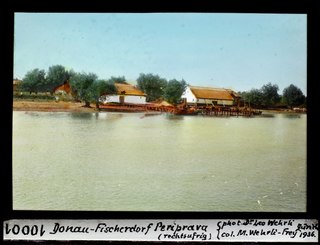Related Research Articles

The Romanian anti-communist resistance movement was active from the late 1940s to the mid-1950s, with isolated individual fighters remaining at large until the early 1960s. Armed resistance was the first and most structured form of resistance against the communist regime, which in turn regarded the fighters as "bandits". It was not until the overthrow of Nicolae Ceaușescu in late 1989 that details about what was called "anti-communist armed resistance" were made public. It was only then that the public learned about the several small armed groups, which sometimes termed themselves "haiducs", that had taken refuge in the Carpathian Mountains, where some hid for ten years from authorities. The last fighter was eliminated in the mountains of Banat in 1962. The Romanian resistance was one of the longest lasting armed movements in the former Eastern Bloc.

Gherla Prison is a penitentiary located in the Romanian city of Gherla, in Cluj County. The prison dates from 1785; it is infamous for the treatment of its political inmates, especially during the Communist regime. In Romanian slang the generic word for a prison is "gherlǎ", after the institution.

Aiud Prison is a prison complex in Aiud, Alba County, located in central Transylvania, Romania. It is infamous for the treatment of its political inmates, especially during World War II under the rule of Ion Antonescu, and later under the Communist regime.

The Periprava labor camp was a labor camp operated by the Romanian communist regime, part of the Brăila Pond labor camps. The camp, located near the village of Periprava in the Danube Delta, held up to 2,000 prisoners. According to a study done by the International Centre for Studies into Communism, 8.23% of political prisoners in Communist Romania did time at Periprava. In the literature on communist prisons and camps in Romania, the Periprava labor camp is described as one of the harshest places of imprisonment. In view of the extremely severe detention and work regime, sheer terror, and high mortality, the camp is known among former detainees as a true "death camp".
Jilava Prison is a prison located in Jilava, a village south of Bucharest, Romania.
The lead mine prison camps in Communist Romania operated in the early to mid-1950s at three sites in Maramureș County: Baia Sprie, Cavnic and along the Nistru valley.
The Brăila Pond labor camps were a series of labor camps operated by the Romanian communist regime in the 1950s and ‘60s, around the Great Brăila Island.
The Caransebeș Prison was a prison in Caransebeș, Romania.

The Târgu Jiu internment camp was a detention facility in Târgu Jiu, Romania. It was a regular prison from 1895 to 1939 and again after 1945, but is best known for its role as an internment camp for various categories of individuals during World War II.
Ocnele Mari Prison was a prison located in Ocnele Mari, Vâlcea County, Romania.

Târgu Ocna Prison is a prison located in Târgu Ocna, Bacău County, Romania.
Botoșani Prison is a prison located in Botoșani, Romania.
Dej Prison is a prison located in Dej, Romania.
Craiova Prison is a prison located in Craiova, Romania.
Brașov Prison was a prison located in Brașov, Romania.
Oradea Prison is a prison located in Oradea, Romania.
Timișoara Prison is a prison located in Timișoara, Romania.
Mislea Prison was a prison located in Mislea, Prahova County, Romania.
Văcărești Prison was a prison located in Bucharest, Romania.
Dumbrăveni Prison was a prison located in Dumbrăveni, Romania.
References
- Muraru, Andrei (2008). Dicționarul penitenciarelor din România comunistă: 1945–1967 (in Romanian). Institutul de Investigare a Crimelor Comunismului în România. Iași: Polirom. ISBN 978-973-46-0893-5. OCLC 297531689.